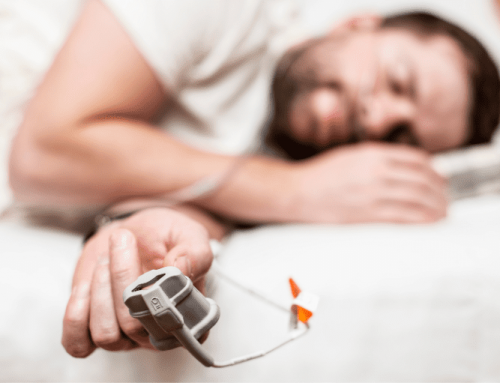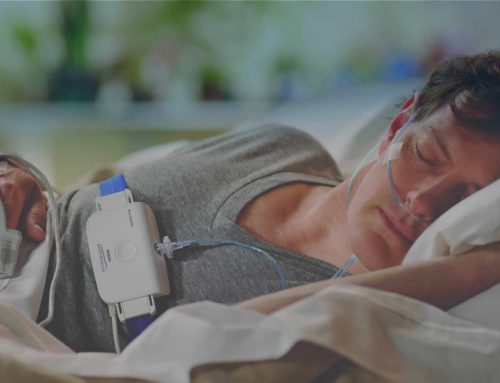Hypoxemia: Management and Treatment
Hypoxemia is a condition that occurs when there are low levels of oxygen in the blood. The blood is continuously circulating, picking up oxygen from the lungs and delivering it throughout the body to use as fuel. If the cells, tissues, and organs do not receive an adequate amount needed to function normally, they start to suffer within minutes, leading to severe complications that can affect heart and brain function.
Certain health conditions and environmental factors can make you more susceptible to low oxygen levels. Some of the most common causes of hypoxemia are chronic obstructive pulmonary disease (COPD) emphysema, pneumonia, asthma, heart disease, anemia, sleep apnea, high altitudes, and certain medications. If oxygen levels begin to fall, mild symptoms develop, such as rapid breathing, restlessness, headaches, fast heart rate, shortness of breath, interrupted sleep, snoring, daytime drowsiness, and lightheadedness. If oxygen levels continue to fall and hypoxemia worsens, more severe symptoms develop, including confusion, lack of coordination, elevated blood pressure, fainting, visual disturbances, bluish tint to extremities (cyanosis), coma, or even death.
Hypoxemia is diagnosed by either an arterial blood draw called an arterial blood gas test (ABG), or a pulse oximeter. An ABG test is done by taking a blood sample from the radial artery in the wrist and sent to the lab to measure oxygen and carbon dioxide content, as well as the pH of the blood. Normal results of an ABG test range from 75 mmHg to 100 mmHg. Anything below 75 mmHg is abnormal. A pulse oximeter is a clip that is placed on a finger and connected to a small device that indicates the oxygen saturation of the blood. This device gives readings much quicker and easier than an ABG test, although it is slightly less accurate. Normal oxygen saturation readings are between 95 and 100 percent. Anything below 95 percent is low unless there is an underlying condition, such as COPD, that causes “normal” oxygen saturation levels to be lower.
The severity of hypoxemia increases as blood oxygen levels fall. Mild hypoxemia readings range from 90 to 94 percent, or 60 to 79 mmHg. Moderate hypoxemia readings range from 75 to 89 percent or 40 to 59 mmHg. Severe hypoxemia is less than 75 percent or 40 mmHg. Regardless of the severity, hypoxemia is considered a medical emergency and requires treatment as soon as possible, or it could cause serious harm to vital organs. The most effective treatment to increase oxygen levels quickly is to deliver supplemental oxygen through a mask covering the nose and mouth or a nasal cannula. Supplemental oxygen can be used along with other techniques like raising the head of the bed to allow more effective breathing, deep breathing exercises, coughing exercises to clear the airway, and medications with bronchodilators to relax muscles and open airways. While it is essential to treat hypoxemia as quickly as possible, it is equally important to determine the cause to prevent future episodes. The most effective treatment will depend on the cause. For example, if pneumonia is causing hypoxemia, additional treatment, including antibiotics, respiratory therapies, and position changes are necessary. If hypoxemia is caused by sleep apnea, a CPAP machine is required to keep the airway open.
When hypoxemia develops, it can progress very quickly, but severe complications can be avoided if treated in its early stages. Therefore, it is important to seek medical attention as soon as symptoms such as shortness of breath, cough, rapid heartbeat, or inability to perform daily activities develop. There are some ways to help prevent hypoxemia by increasing oxygen content in the blood.
- Regular exercise helps improve the respiratory system’s ability to function and increase lung capacity.
- Avoid areas with low oxygen content, for instance, higher altitudes or smoggy areas.
- Avoid smoking and second-hand smoke.
- Eat a healthy diet.
- Practice deep breathing exercises.
All of these will help increase oxygen content and improve the body’s ability to absorb and circulate oxygen properly. Most importantly, it is necessary to seek treatment for any condition that could potentially cause hypoxemia to prevent any damage to the brain and heart due to oxygen deprivation. If you think you may be experiencing symptoms of hypoxemia or have any condition that could lead to hypoxemia, contact your physician to discuss your symptoms and determine if you could benefit from oxygen therapy.







